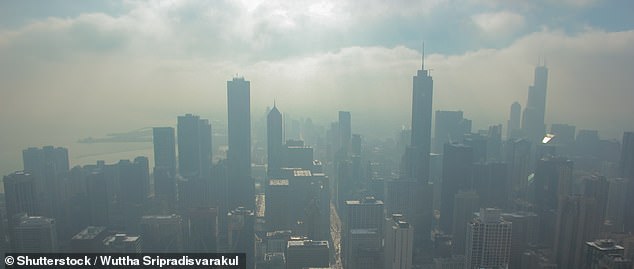
10 Million Across U.S. States Told to Shut Windows Today as Toxic Chemicals Trigger Air Emergency
10 Million Americans Under Air Quality Alerts as Canadian Wildfire Smoke Spreads
Officials have issued air quality alerts for approximately 10 million Americans across the Midwest and Northeast, urging residents to minimize outdoor activities and keep windows closed. Smoke from wildfires in Canada has drifted into parts of Minnesota, Michigan, Illinois, Indiana, New York, Vermont, and Maine, with advisories lasting through Tuesday night.
[Image placeholder: National Weather Service map highlighting affected states, including Chicago under advisory.]
Health Risks and Precautions
The alerts are due to elevated levels of ground-level ozone and fine particulate matter (PM2.5), which can penetrate deep into the lungs and bloodstream. In Upstate New York, Vermont, and Maine, health officials advise limiting strenuous outdoor activities, especially for sensitive groups like children, older adults, and those with respiratory or heart conditions.
Regions such as northeast Minnesota, eastern Michigan, and northwest Indiana were warned to keep windows shut overnight to reduce smoke exposure. While ozone levels remain below “dangerous” thresholds, areas like Michigan’s St. Clair-Monroe counties and New York’s Niagara-Southern Erie counties face “unhealthy” air (AQI 101–150) for sensitive groups.
[Image placeholder: Smoke blankets Toronto skyline, illustrating cross-border pollution.]
Ongoing Canadian Wildfires
The smoke originates from wildfires in Canada, where over 30,000 people were evacuated in Saskatchewan and Manitoba earlier this summer. A recent fire on Newfoundland’s Bonavista Peninsula doubled in size overnight, destroying several structures. Six U.S. lawmakers recently criticized Canada for the cross-border smoke, prompting Manitoba’s premier to accuse them of downplaying a deadly crisis.
State-Specific Advisories
- New York: Alerts cover 15 counties, including Niagara, Erie, and Monroe, with particulate levels (AQI >100) affecting cities like Buffalo and Rochester.
- Michigan: Detroit, Ann Arbor, and Port Huron face ozone and particulate risks, with statewide warnings in effect.
- Minnesota: Northeastern regions, including Duluth and International Falls, anticipate lingering smoke and new plumes from Canada on Tuesday.
- Illinois/Indiana: Chicago, Gary, and surrounding areas are under “Action Days” due to ozone risks.
- Vermont/Maine: Particulate levels in Vermont’s Chittenden County and Maine’s Aroostook County could reach “Code Orange” (AQI 151), signaling heightened health dangers.
[Image placeholder: Air Quality Index chart explaining AQI categories.]
Officials’ Recommendations
Health agencies emphasize that vulnerable populations should stay indoors, use air purifiers, and reschedule outdoor activities. “When pollution levels rise, reducing physical exertion outdoors can prevent adverse health effects,” stated New York’s health department.
[Image placeholder: Masked individual jogging in hazy conditions.]
While no regions are expected to hit “hazardous” AQI levels (201+), officials continue monitoring the situation. Smoke patterns may shift depending on wind directions and fire activity in Canada. Residents are encouraged to check local air quality updates via tools like AirNow.gov.
[Image placeholder: Satellite image of smoke drifting from Canada into the U.S.]
As wildfires rage on, millions remain under alerts, underscoring the far-reaching impacts of climate-driven disasters. Authorities urge caution until conditions improve.
Word count: ~600


